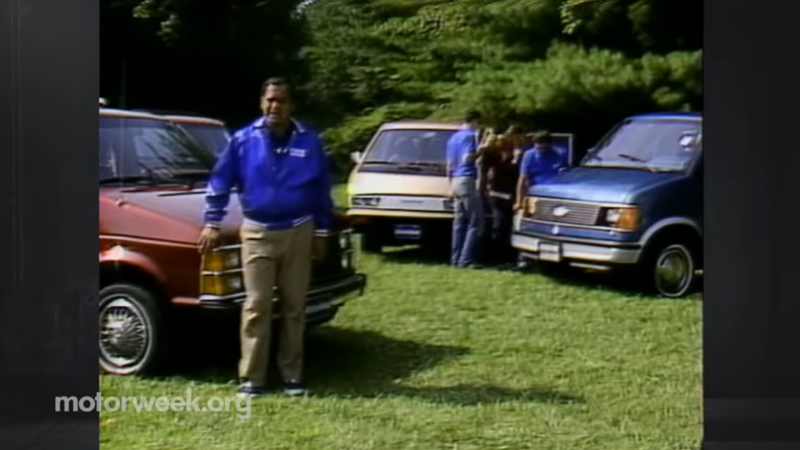Early Minivans Sure Were Weird

Ask most people nowadays what a minivan looks like and they’d likely be able to provide an accurate description, but in the early days of the minivan things weren’t so clear. Many automakers’ early designs were varied, with some minivans utilizing truck chassis and a rear-wheel-drive configuration. It didn’t take automakers long to reach a consensus on the most effective and efficient minivan designs, with most early truck-based minivans lasting only a single generation before getting entirely overhauled to become more car-like. This Motorweek Retro Review is not a new one, but it came up on my recommended page and I couldn’t help but wince watching these vans dip and dive through the slalom.
Toyota took a few generations to sort out its minivans. The first Toyota van sold in the United States was named the Toyota Van, and it had an unconventional look paired with a now-unconventional mid-engine rear-wheel-drive layout. Watching the Van wallow through the slalom is terrifying, but the high-speed lane change maneuver looks straight up perilous. Its teeny tiny 88-inch-long wheelbase is nearly 10 inches shorter than that of a modern Mitsubishi Mirage hatchback. The diminutive wheelbase combined with the van’s tall height assures the trip through the cones or around a corner at any speed is a treacherous one.
Chevrolet’s then-new Astro was a truck-based rear-wheel-drive van that had more of a traditional American full-sized van vibe than the other vans in this test. Its engine configuration required removal of interior panels for some maintenance tasks, and its truck platform compromised interior flexibility. The Ford Aerostar had a weird unibody construction that was placed on top of a traditional frame, allowing it to tow heavy loads, but as soon as Ford introduced its unibody Windstar, the Aerostar fell out of grace with consumers.
The Plymouth Voyager was the only front-wheel-drive minivan in this comparison test, and it introduced and popularized the now-standard minivan formula. Its front-engine, FWD configuration maximized efficiency and interior flexibility, and its unibody construction allowed it to handle the most like a normal car. Seeing other manufacturer’s minivans compared to the Voyager, it’s clear why the Plymouth’s design became the standard for all others to follow.
Watching these old car reviews always reminds me how spoiled we are as modern consumers. The Toyota Van took over 18 seconds to go from 0 to 60 mph, and now a hybrid Toyota Sienna can achieve the same milestone more than 10 seconds quicker. The Honda Odyssey can even hit 60 mph in about 6.5 seconds, while SUV family haulers like the Tesla Model X and Dodge Durango SRT can reach the same speeds in around 3 seconds. Modern family cars are lightyears better than they used to be, and buyers are positively spoiled for choice.

 Yahoo Autos
Yahoo Autos 